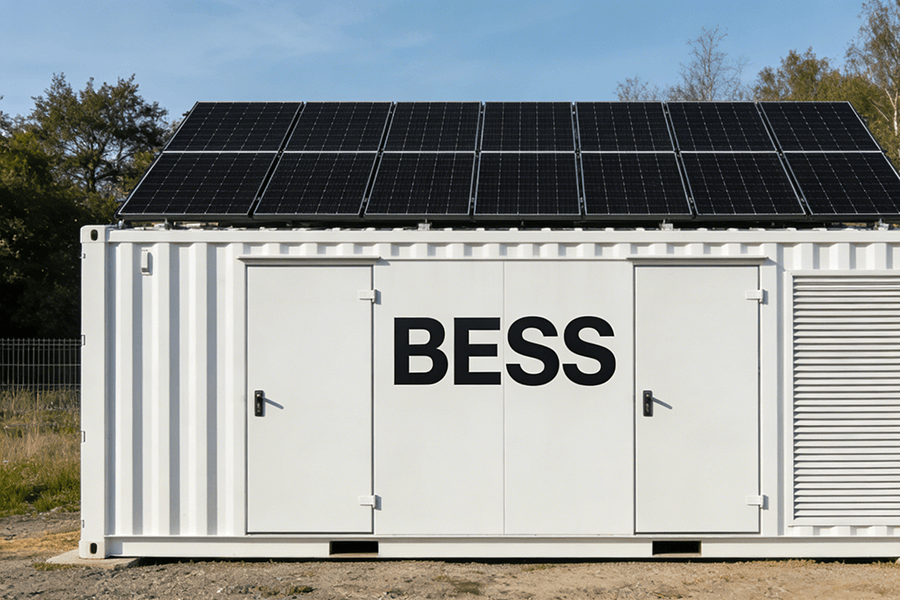Introduction
Large-scale solar projects have become essential contributors to the global transition to clean and sustainable energy. However, their intermittent nature, dependent on sunlight, poses a challenge for maintaining a consistent energy supply. Energy storage solutions offer a compelling remedy to this issue by enabling large solar projects to store excess energy when the sun is shining and release it when needed, effectively balancing energy supply and demand. This article explores the significance of energy storage in large solar projects and its role in ensuring a reliable and stable power supply.
The Role of Energy Storage in Large Solar Projects
Storing Excess Energy: Solar power generation often exceeds immediate demand when the sun is shining brightly. Energy storage solutions allow surplus electricity to be stored for later use. This is particularly important in regions where grid capacity is limited or during periods of low energy demand.
Grid Stability: Energy storage systems enhance grid stability by mitigating fluctuations in energy supply. They can provide rapid response and voltage support, ensuring a constant power supply and avoiding blackouts during peak demand.
Optimizing Solar Energy: Energy storage enables large solar projects to use excess energy efficiently. Rather than curtail generation, surplus power can be stored for later use or sold back to the grid, maximizing the economic viability of the project.
Enhancing Grid Resilience: Energy storage solutions can provide backup power during grid outages, ensuring that essential facilities like hospitals, data centers, and emergency services have a reliable energy source.
Types of Energy Storage Solutions
Battery Energy Storage Systems (BESS): Lithium-ion batteries and other chemistries are commonly used in large solar projects. BESS can store energy for hours or even days, making them suitable for smoothing energy output and providing backup power.
Pumped Hydro Storage: Pumped hydro storage facilities store energy by pumping water to an elevated reservoir when energy generation exceeds demand. During periods of high demand, the water is released to generate electricity.
Thermal Energy Storage: Concentrated solar power (CSP) systems use thermal energy storage, such as molten salt, to store excess heat energy generated by the sun. This stored energy can be converted into electricity as needed.
Flywheel Energy Storage: Flywheels store kinetic energy in a spinning rotor. They provide fast response times and are suitable for short-duration energy storage applications.
Benefits of Energy Storage in Large Solar Projects
Grid Flexibility: Energy storage solutions enhance grid flexibility by enabling large solar projects to adapt to fluctuations in energy demand and supply, leading to more stable and reliable grid operations.
Enhanced Economic Viability: Energy storage systems increase the economic viability of large solar projects by optimizing energy use, maximizing self-consumption, and offering opportunities for ancillary services.
Clean Energy Transition: Energy storage supports the transition to clean energy by enabling the integration of intermittent renewable sources like solar into the grid while reducing reliance on fossil fuels.
Reliability and Resilience: Large solar projects with energy storage can offer a reliable power supply, even during extreme weather events or grid disruptions, ensuring uninterrupted energy access.
Environmental Benefits: Energy storage helps reduce emissions by allowing for cleaner energy use and decreasing the need for fossil fuel backup generation.
Challenges and Future Considerations
Cost: While the cost of energy storage has been decreasing, it remains a significant factor in large-scale deployment. Continued cost reductions are crucial for widespread adoption.
Materials and Recycling: Battery technologies require materials like lithium, cobalt, and nickel. Sustainable practices for material extraction and recycling must be developed to minimize environmental impact.
Technology Advancements: Ongoing research and development are necessary to improve the performance and lifespan of energy storage systems, as well as to develop new, more sustainable materials.
Regulatory Frameworks: Governments and regulatory bodies must establish supportive policies and regulations to encourage the integration of energy storage into large solar projects.
Conclusion
Energy storage solutions are instrumental in addressing the intermittency of solar energy generation and ensuring a stable and reliable energy supply from large solar projects. They play a vital role in grid stability, cost optimization, and the transition to clean and sustainable energy sources.
As the world continues to shift towards renewable energy, the integration of energy storage into large solar projects will become increasingly important. It not only enhances the economic viability and environmental benefits of solar energy but also contributes to grid resilience and reliability. Energy storage solutions are an essential component of a sustainable and secure energy future.
If you want to customize your own photovoltaic solution today, please contact us.

